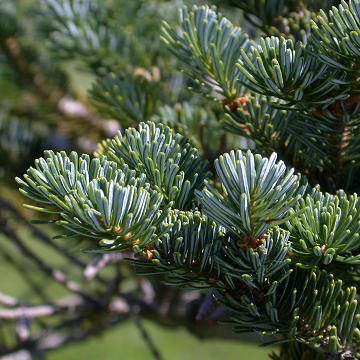

Abies balsamea - (image 1 of 6)
Taxonomy
Family: Pinaceae
Habitat
Moist forests and swamps over organic soils. High elevations to timberline.
Associates
Populus tremuloides, Betula papyrifera, Picea rubens, Picea mariana, Picea glauca, Tsuga canadensis
Distribution
Limited to the upper Midwest and New England states in the United States. The only fir native to Eastern Canada
Morphology
Needles 15-25mm long, tip rounded or notched, arranged in 2 ranks, crowding toward the upper portion of the twig. Buds ovoid, to 5 mm long, resinous. Bark dull green with resin blisters; becoming red-brown and scaly with age. Can reach a height of 40 to 60 feet. Cones 4 to 8 cm long, upright on the stems; green tinged with purple.
Notes
Wetland Indicator: Facultative in the northeastern states; Facultative Wetland in the central states.
Source of wood pulp and lumber. Popular as a Christmas tree because the needle are long lasting. Not adapted to fire. Stands of balsam fir are periodically damaged by eastern spruce budworm (Choristoneura fumiferana).
References
Dirr, Michael A.
1998. Manual of Woody Landscape Plants:
Their Identification, Ornamental Characteristics, Culture, Propagation and Uses.
5th ed. Champaign, Illinois: Stipes Publishing L.L.C.
Farrar, J. L. 1995.
Trees of the Northern United States and Canada.
Ames, Iowa: Iowa State University Press.
Swink, F. and G.
Wilhelm. 1994. Plants of the Chicago Region.
Indiana Academy of Science. The Morton Arboretum. Lisle, Illinois.
|
© Michael Hough 2004 |